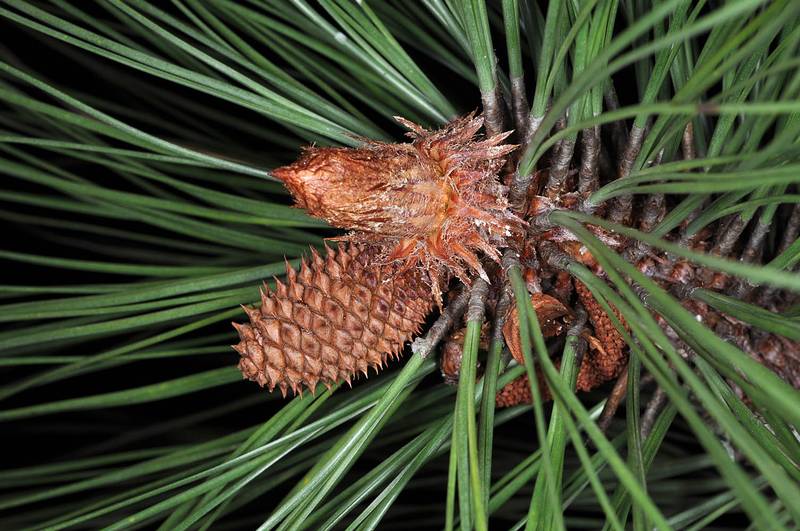Pinus ponderosa
Pinus rigida
bull pine, ponderosa pine, western yellow pine
Bark thick, that of younger trees deeply furrowed and dark reddish-brown or blackish, gradually changing to cinnamon-red in older trees, divided into large plates that freely flake off.
Needles usually in clusters of 3 toward the branch ends, 12-20 cm. long, yellowish-green, on spur branches that are ultimately deciduous with the needles.
Staminate cones yellow to purplish, strongly clustered, crowded at the base of shoots of the current season; ovulate cones near the branch tips, reddish-purple when young, sub-sessile, nearly horizontal, becoming reddish-brown, then brown when mature, broadly ovate, 8-14 cm. long, the scales chocolate-brown, with a thickened, yellowish-brown, strongly prickly tip.
Pinus ponderosa
Pinus rigida
- Local floras:
BC,
CA,
OR,
WA
- Local Web sites:
CalFlora,
CalPhotos,
Flora NW,
PNW Herbaria
WildflowerSearch
iNaturalist (observations)
USDA Plants Database
- LBJ Wildflower Center
- SEINet
- Plants of the World Online
- Encyclopedia of Life
- Wikipedia
- Google Image Search


